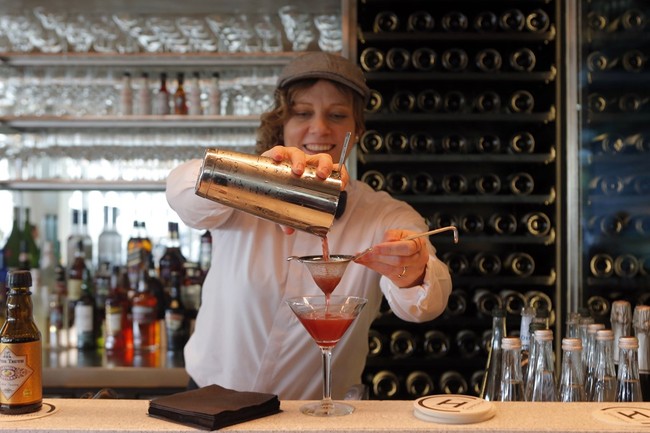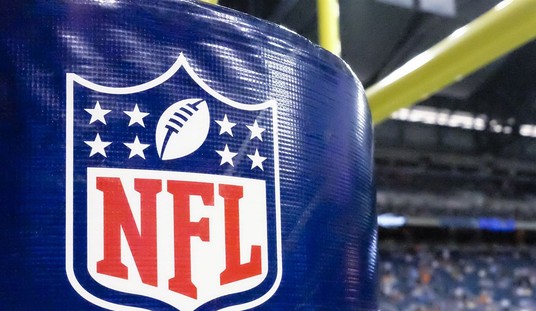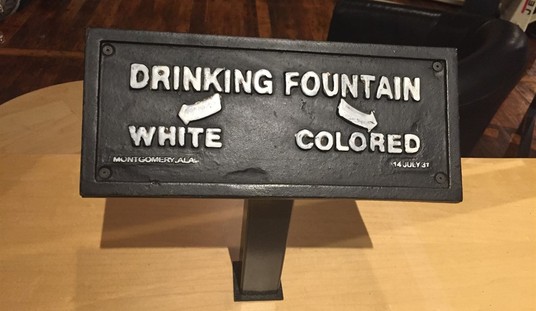As a way of fighting off the cold, or battling the winter doldrums, it is a fine time to tap into the spirit of the tropics as a tonic. Why not divert your angst for a spell with some jaunty, flashy distractions in a glass?
If you are to enter any drinking emporium worth its margarita salt, you are bound to be struck on some shelves by an array of rainbow-hued bottles. The bright, almost garish hues of yellow, bright green, reds, and even blue fluids draw attention and they can also generate interest. The concept of having a tall drink with an eye-catching color has an appeal, but the trick is to have something that is as equally potable as it is enticing.
Some hardcore drinkers eschew these options as being too light in the body or almost effeminate, but this is casting judgment and denying exploration and enjoyment. While those might be resistant to the display, it means they are bypassing an array of flavors as well. The cordials section offers up options and creativity. Trader Vic and Don The Beachcomber built their tiki empires on the framework of rum, fruits, and these flavored options.

Possibly the most popular of these cordials in establishments is Triple Sec, found in the speed rail of most bars, as it is a component in many cocktail standards. This is the orange-based additive that boosts flavors and sweetness. Originating in France, the “sec” in its name means “dry,” differentiating it from other orange liquors, with the “triple” referring to the three distillations from its original creation. Top-shelf brands are Cointreau, as a true triple sec, and Grand Marnier, which has a steeper orange flavor and is blended with a dose of cognac.
This however was predated by Curacao, the cerulean drink created on the Dutch Caribbean island of the same name. The original formulation used the peels of the local species of oranges, Laraha, as well as some additional spices. So why is this orange-flavored cordial blue in hue? Basically: marketing. Curacao predated the French Triple Secs by a couple of centuries, but it is believed that around the turn of the 1900s is when Curacao took on the azure character, as a form of replicating the color of the ocean.
The uncolored side of the shelf involves the cacaos, either the clear or brown selections. The edible chocolate and the liquor varieties were basically formulated in tandem. Truly a fruit, the cacao trees grow within reach of the equator, producing football-sized pods containing a sweet pulp and dozens of the bitter seeds. When discovered by explorers, they found the natives fermenting these pods, leading to the creation of chocolates — and the corresponding liqueurs.
We need to clarify a term seen frequently on the cordial shelves – creme. This does not — as evidenced by the crystalline nature of the contents — involve dairy. Anything involving the standard use of “cream” on the label (such as Bailey's Irish Cream) does indicate the addition of ingredients with milk solids of some sort. “Creme,” meanwhile, is an indicator of sweetness, not milk-based content. Cordials sporting the Creme de (fruit flavoring) description have a minimum of 250 grams of invert sugar, along with a minimum alcohol content of 15 percent. “Cordial” or “Liqueur” is essentially the U.S. standard involving flavored spirits with 2-1/2 percent of sugar, based on weight.
Okay, but are any of these worth a damn? Of course. The key is targeting flavors you know and enjoy, then go on an exploration.

THE AQUA VELVA
This was big in the 70s, named after a once-popular aftershave of that era.
1oz. Vodka
1oz. Gin
3/4oz. Blue Curacao
Juice of ½ Lemon
Juice of ½ lime
1oz. Simple Syrup
4oz. Soda Water
In a shaker with ice, add the first six ingredients and shake vigorously. Strain into a highball or hurricane glass and fill with soda. Garnish with cherry and ¼ pineapple wedge. You can replace the juices, syrup, and soda with lime-flavored soda.
THE DIRTY BANANA
Something of a banana milkshake with a twist of flavors.
2oz. Gold Rum
1oz. Creme de Banana
1oz. Coffee Liqueur
3/4oz. Creme de Cacao
3oz. Half-N-Half
½ Ripe banana
Combine ingredients in a blender with crushed ice, blending to smooth. Pour into Daiquiri glass. Garnish with a banana slice.
ROOT BEER COCKTAIL
Crack out the tall, slender bottle of yellow liqueur. Before the advent of root beer Schnapps this was a remarkable blending that uses the anise/licorice cordial to deliver the exact flavor of the soft drink.
1 shot Vodka
1/2oz. Galliano
1/2oz. Coffee Liqueur
2oz. Soda
Combine ingredients over ice in an Old Fashioned glass, stirring gently to blend.
TROPICAL MARGARITA
This variety is sweeter and fruit-forward and pleasing for those who normally steer away from the bitterness of a standard margarita.
1 shot White Tequila
1/2 shot Triple Sec
1oz. Melon liqueur
Juice of ½ Lime
2oz. Pineapple juice
Pour ingredients into a shaker with ice and shake for 30 seconds. Pour contents into margarita glass (optional: rim with sugar). Garnish with Lime wheel and ¼ pineapple wedge.













